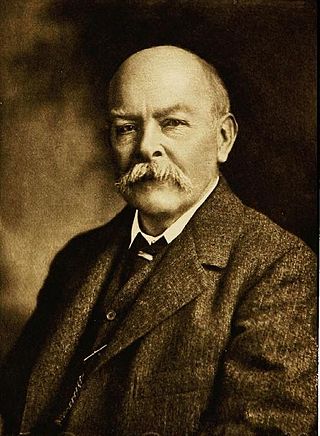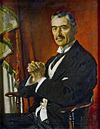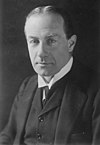
The University of Birmingham is a public research university in Birmingham, England. It received its royal charter in 1900 as a successor to Queen's College, Birmingham, and Mason Science College, making it the first English civic or 'red brick' university to receive its own royal charter, and the first English unitary university. It is a founding member of both the Russell Group of British research universities and the international network of research universities, Universitas 21.
The British Science Association (BSA) is a charity and learned society founded in 1831 to aid in the promotion and development of science. Until 2009 it was known as the British Association for the Advancement of Science (BA). The current Chief Executive is Hannah Russell. The BSA's mission is to get more people engaged in the field of science by coordinating, delivering, and overseeing different projects that are suited to achieve these goals. The BSA "envisions a society in which a diverse group of people can learn and apply the sciences in which they learn." and is managed by a professional staff located at their Head Office in the Wellcome Wolfson Building. The BSA offers a wide variety of activities and events that both recognise and encourage people to be involved in science. These include the British Science Festival, British Science Week, the CREST Awards, For Thought, The Ideas Fund, along with regional and local events.

The Royal Society of Chemistry (RSC) is a learned society and professional association in the United Kingdom with the goal of "advancing the chemical sciences". It was formed in 1980 from the amalgamation of the Chemical Society, the Royal Institute of Chemistry, the Faraday Society, and the Society for Analytical Chemistry with a new Royal Charter and the dual role of learned society and professional body. At its inception, the Society had a combined membership of 49,000 in the world.

Sir Walter Norman Haworth FRS was a British chemist best known for his groundbreaking work on ascorbic acid while working at the University of Birmingham. He received the 1937 Nobel Prize in Chemistry "for his investigations on carbohydrates and vitamin C". The prize was shared with Swiss chemist Paul Karrer for his work on other vitamins.
Frederic Stanley Kipping FRS was an English chemist. He undertook much of the pioneering work on silicon polymers and coined the term silicone.

John Henry Poynting FRS was an English physicist. He was the first professor of physics at Mason Science College from 1880 to 1900, and then the successor institution, the University of Birmingham until his death.
Sir Martin Onslow Forster, FRS was a chemist and a director of the Indian Institute of Science in Bangalore, India.

Arthur Lapworth FRS was a Scottish chemist. He studied the mechanisms and kinetics of organic reactions. His most cited work was on the bromination of acetone published in 1904. He served as a professor of inorganic and physical chemistry at the University of Manchester.

William Augustus Tilden was a British chemist. He discovered that isoprene could be made from turpentine. He was unable to turn this discovery into a way to make commercially viable synthetic rubber.

Percy Faraday Frankland CBE FRS was a British chemist.
The Lord Rector of the University of Aberdeen is the students' representative and chairperson in the University Court of the University of Aberdeen. The position is rarely known by its full title and most often referred to simply as "Rector". The rector is elected by students of the university and serves a three-year term. Although the position has existed since 1495, it was only officially made the students' representative in 1860.
Dame Lynn Faith Gladden is the Shell Professor of Chemical Engineering at the University of Cambridge. She served as Pro-vice-chancellor for research from 2010 to 2016.

The Castle Rock School is a coeducational secondary school and sixth form located in Coalville in the English county of Leicestershire.

The Department of Chemistry at the University of Manchester is one of the largest departments of Chemistry in the United Kingdom, with over 600 undergraduate and more than 200 postgraduate research students.

Ian William Murison Smith was a chemist who served as a research fellow and lecturer in the Department of Chemistry, University of Cambridge from 1963 to 1985 and Professor of Chemistry at the University of Birmingham from 1985 to 2002.
John Philip Simons is a British physical chemist known for his research in photochemistry and photophysics, molecular reaction dynamics and the spectroscopy of biological molecules. He was professor of physical chemistry at the University of Nottingham (1981–93) and Dr. Lee's Professor of Chemistry at the University of Oxford (1993–99).
John Joseph Sudborough was a British professor of chemistry. He specialized in physical organic chemistry with studies on steric hindrance in benzene compounds. He was the founding professor at the department of organic chemistry at the Indian Institute of Science, Bangalore





















